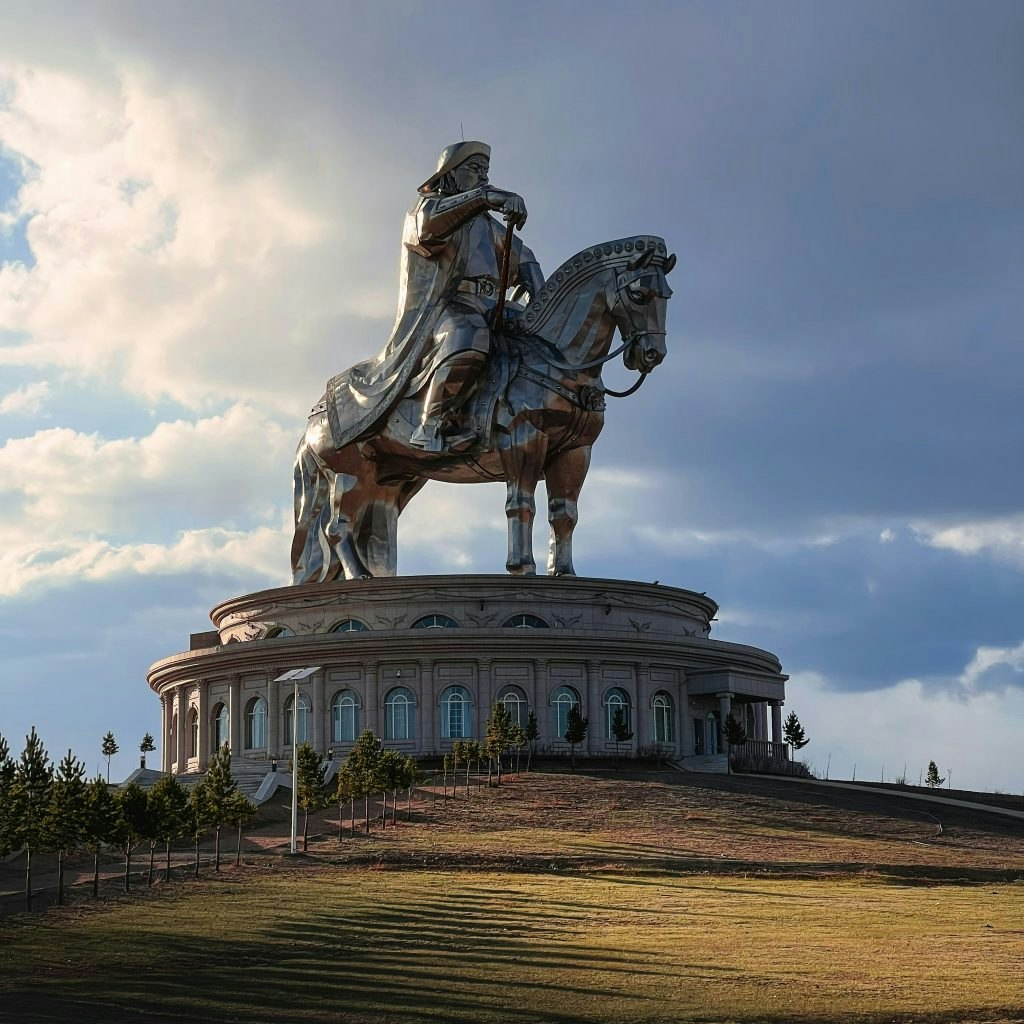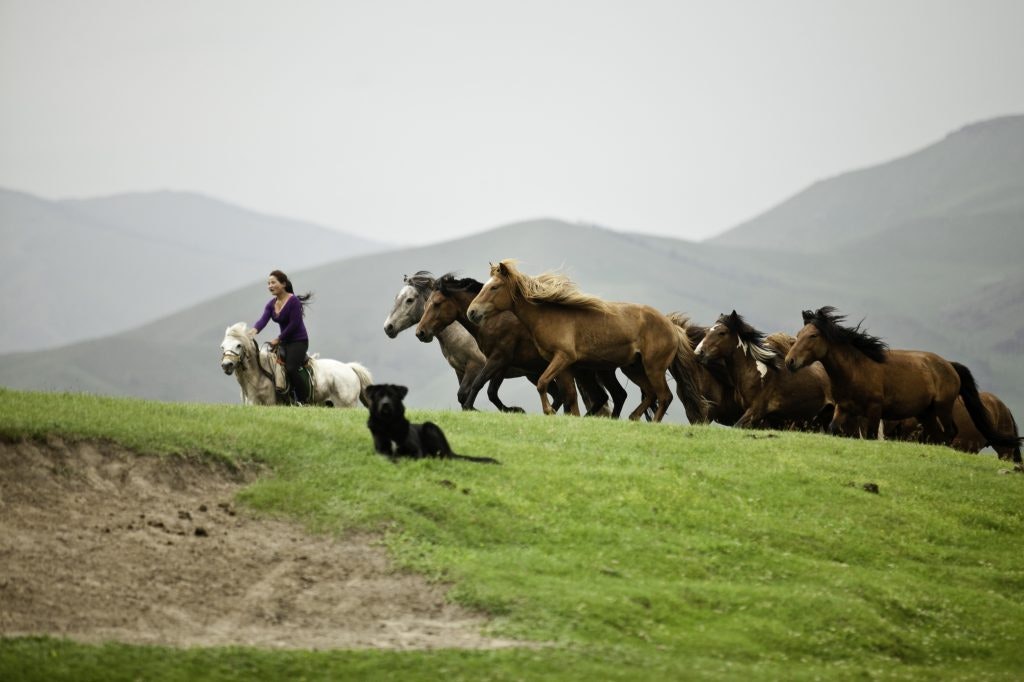5. The burial site of Genghis Khan has never been found
Despite the incredible power and success of this national hero, Genghis Khan’s final resting place remains a mystery to this day. Khan reportedly never wanted his body to be found.
Many stories regarding his burial exist, with some saying that his soldiers killed everyone involved in laying the leader to rest before killing themselves to ensure the secret of its location was kept. Other stories suggest that the soldiers remained alive but that they had 1,000 horses run over the burial site to ensure that no traces of this fresh grave remained.
Whatever the truth, no one knows the location to this day, despite many attempts from outsiders to find it.
Related: Everything You Need to Know About Traveling to Mongolia
6. The Naadam Festival focuses on all that is “manly”
The Naadam Festival, held every July, is also known locally as eriin gurvan naadam, which means “the three games of men.” These games are:
- Mongolian wrestling: Mongolian wrestling, or bökh, is a sport in which two men prove their strength and agility by remaining upright. The participant who touches the ground with any body part that isn’t their foot, loses. This sport dates back to the times of Genghis Khan, who used it to keep his warriors in shape and ready for combat. Today it is also characterized by its unique clothing.
- Horse racing: Horse racing is taken very seriously in Mongolia and the Naadam horse races are just some of the important horse races in the nation. At Naadam the races are divided into six categories according to the age of the horses and cross-bred horses are not allowed to compete against Mongolian horses.
- Archery: Archery is a popular sport in Mongolia, with three styles practiced in the country — Khalka, Buriat and Uriankhai. Khalka is the most commonly practiced form of archery and involves the longest shooting distances. Buriat is practiced by the Buriat ethnic minority in Mongolia and they will often wear traditional clothing during Naadam. Uriankhai is only practiced by men and is associated with the Uriankhai ethnic group.
Naadam Festival events are held throughout the nation and the festival has been celebrated in Mongolia for centuries. The festival events allow people to gather with friends and family, eat together and watch the games. Though men and boys have traditionally been the only ones to compete, women and girls now also participate in the horse racing and archery events.
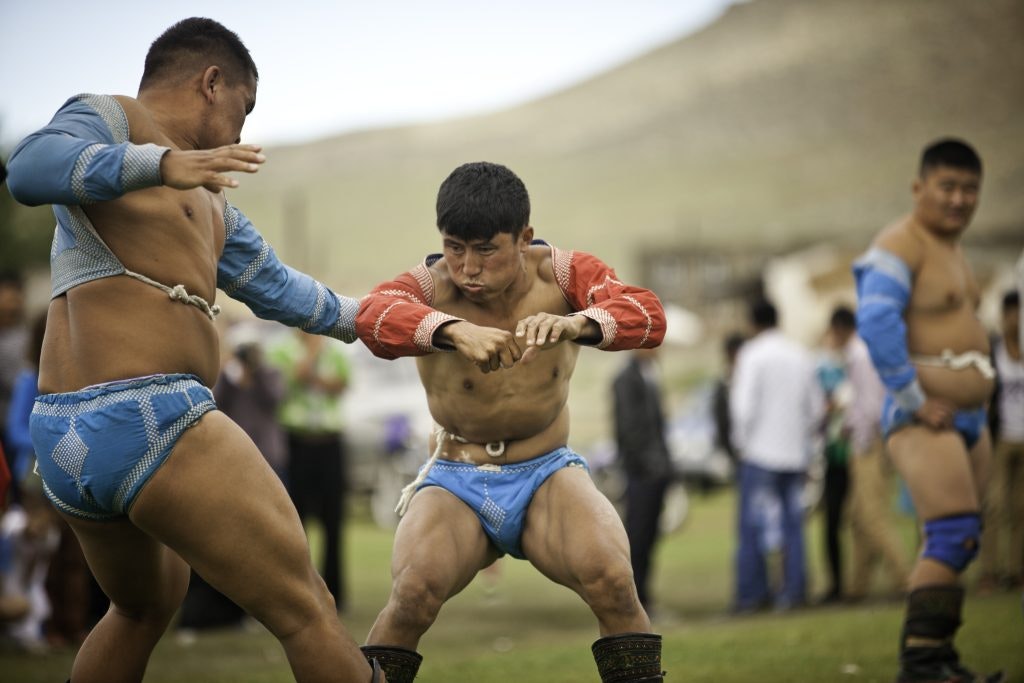
Men in Mongolia practice traditional wrestling in Traditional clothing.
7. Ulaanbaatar is the coldest capital city in the world
Ulaanbaatar, which translates to “Red Hero,” is the coldest capital city of anywhere on the planet, with an average temperature of under 30 degrees Fahrenheit. Temperatures in the city can reach as low as -40 degrees in winter, so be prepared with some warm clothes if you choose to head over in January.
8. The population density of Mongolia is one of the lowest in the world
Mongolia’s population density is so low that only remote locations such as Greenland can beat it.
At 603,909 square miles, Mongolia is the 18th largest country in the world but its total population is only around 3.4 million, meaning its population density amounts to roughly 6 people per square mile.
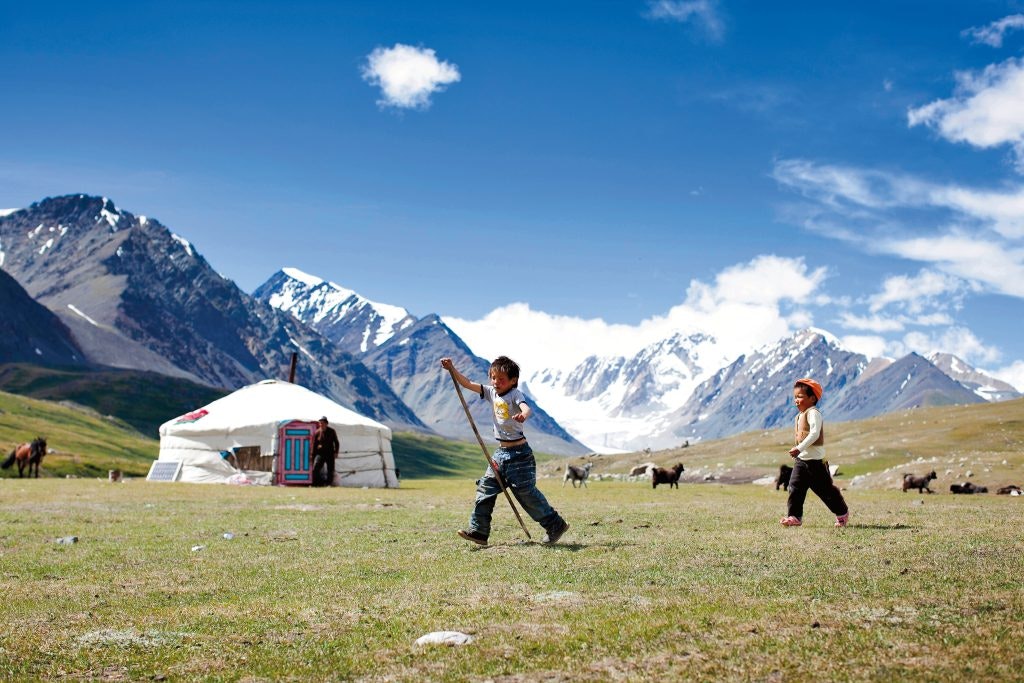
9. Mongolia is home to the hardy Bactrian camel
The wild Bactrian camel, a double-humped camel, roams the Gobi Desert in Southern Mongolia and Northern China. Thanks to the species’ resilience, the Bactrian camel is able to withstand temperatures ranging from as low as -40 degrees Fahrenheit to as high as 122 degrees Fahrenheit.
In addition to the Bactrian camel, there is a wide array of wildlife native to Mongolia. Mongolia is home to the snow leopard, Mongolian horse and Gobi bear.
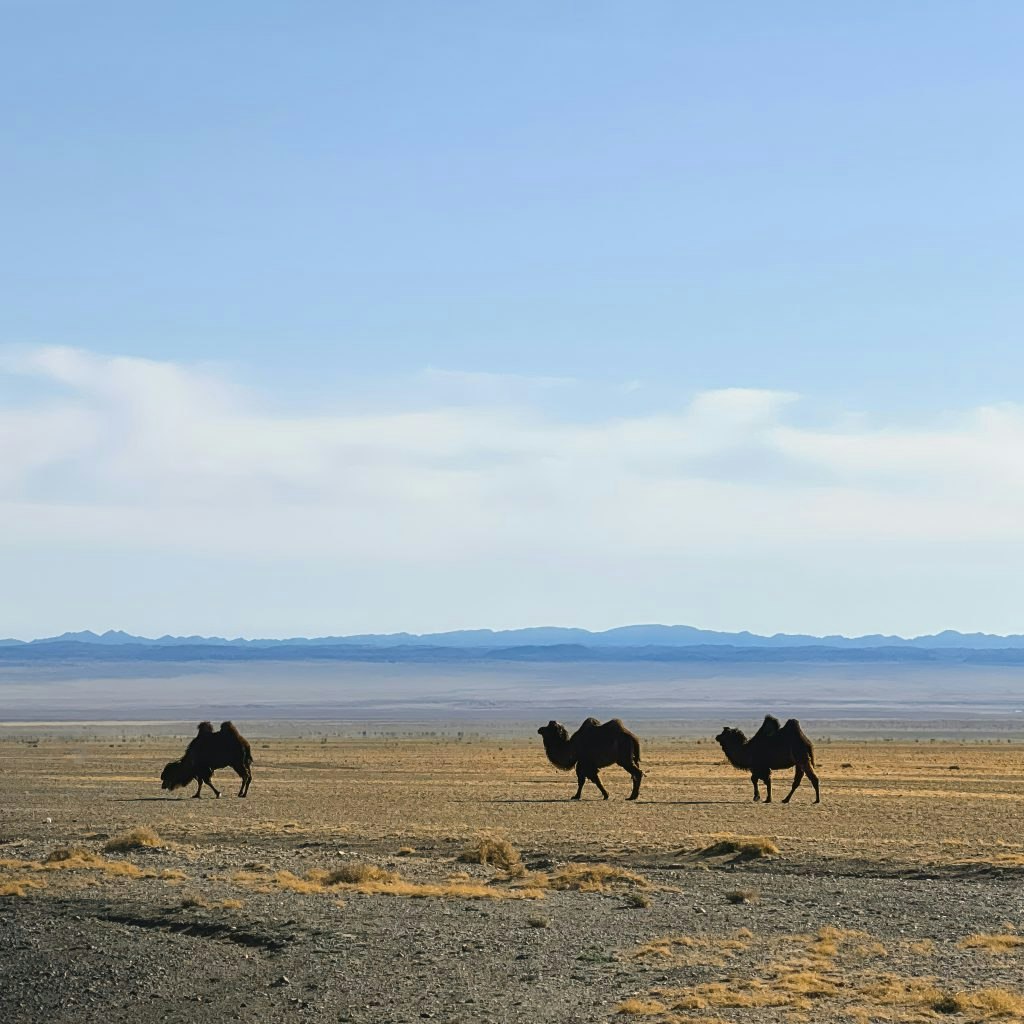
10. The Gobi Desert gets very cold, as low as -22 °F
The Gobi Desert is the largest desert in Asia and occupies part of Inner Mongolia and Outer Mongolia. It gets very cold. The Gobi Desert can drop to temperatures as low as -22 degrees Fahrenheit in the winter with snow covering the sand under the blue sky.
The Gobi Desert is also the location of important archaeological discoveries, with the Scientific American saying, “Mongolia’s Gobi Desert contains one of the richest assemblages of dinosaur remains ever found.”
11. Mongolian mothers get an award if they have 4 children or more
In an attempt to encourage population growth, the Mongolian government awards mothers the Second Order of Glorious Motherhood if they have four or five children. The First Order of Glorious Motherhood is awarded if they bear 6 or more children.
Mothers who win these awards receive a medal and a financial payout. In 2022 alone, an impressive 912 women won the First Order and 11,647 won the Second Order.
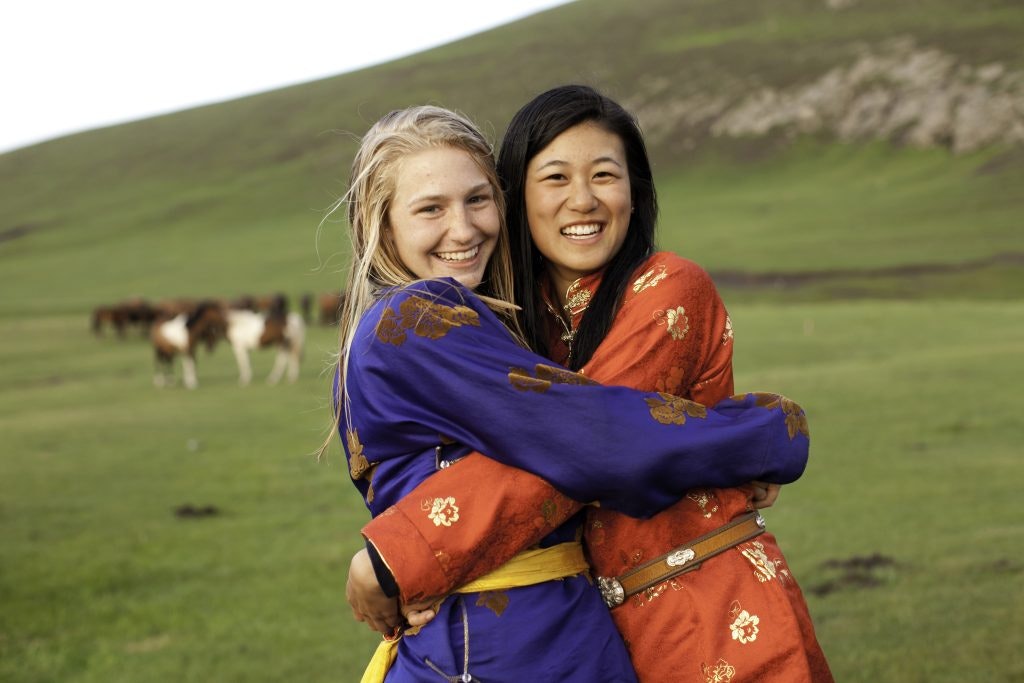
Lots of smiles to be seen on Rustic Pathways trips to Mongolia.
12. Mongolia has the world’s oldest national park, Bogd Khan Uul National Park
Bogd Khan Uul National Park in Mongolia, was established by the Mongolian government in 1778, predating the establishment of Yellowstone National Park by around a century.
These are the five oldest national parks in the world:


